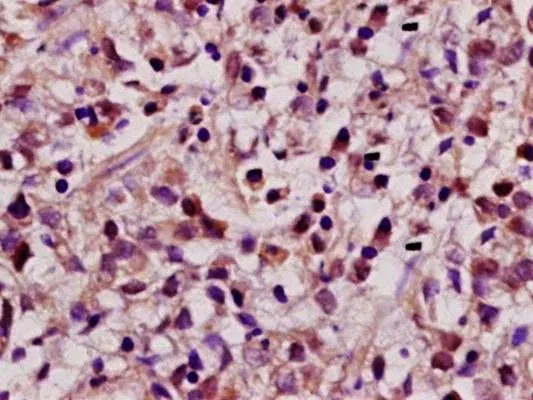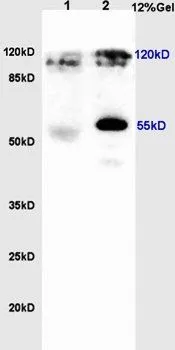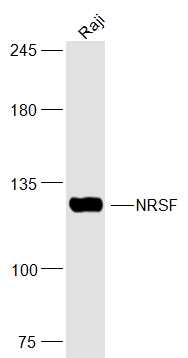
IHC-P analysis of human gastric tissue using GTX37363 REST antibody.
REST antibody
GTX37363
ApplicationsWestern Blot, ImmunoHistoChemistry, ImmunoHistoChemistry Paraffin
Product group Antibodies
ReactivityHuman, Mouse, Rat, Zebra Fish
TargetREST
Overview
- SupplierGeneTex
- Product NameREST antibody
- Delivery Days Customer9
- Application Supplier NoteWB: 1:500-2000. IHC-P: 1:400-800. *Optimal dilutions/concentrations should be determined by the researcher.Not tested in other applications.
- ApplicationsWestern Blot, ImmunoHistoChemistry, ImmunoHistoChemistry Paraffin
- CertificationResearch Use Only
- ClonalityPolyclonal
- Concentration0.5 mg/ml
- ConjugateUnconjugated
- Gene ID5978
- Target nameREST
- Target descriptionRE1 silencing transcription factor
- Target synonymsDFNA27, GINGF5, HGF5, NRSF, WT6, XBR, RE1-silencing transcription factor, neural-restrictive silencer factor, neuron restrictive silencer factor, repressor binding to the X2 box
- HostRabbit
- IsotypeIgG
- Protein IDQ13127
- Protein NameRE1-silencing transcription factor
- Scientific DescriptionThis gene was initially identified as a transcriptional repressor that represses neuronal genes in non-neuronal tissues. However, depending on the cellular context, this gene can act as either an oncogene or a tumor suppressor. The encoded protein is a member of the Kruppel-type zinc finger transcription factor family. It represses transcription by binding a DNA sequence element called the neuron-restrictive silencer element. The protein is also found in undifferentiated neuronal progenitor cells and it is thought that this repressor may act as a master negative regulator of neurogenesis. Alternatively spliced transcript variants have been described. [provided by RefSeq, May 2018]
- ReactivityHuman, Mouse, Rat, Zebra Fish
- Storage Instruction-20°C or -80°C,2°C to 8°C
- UNSPSC12352203
References
- Casadei E, Tacchi L, Lickwar CR, et al. Commensal Bacteria Regulate Gene Expression and Differentiation in Vertebrate Olfactory Systems Through Transcription Factor REST. Chem Senses. 2019,44(8):615-630. doi: 10.1093/chemse/bjz050Read this paper







